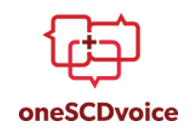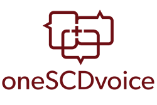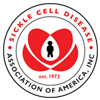Trusted Resources: Evidence & Education
Scientific literature and patient education texts
Randomized phase 2 study of GMI-1070 in SCD: reduction in time to resolution of vaso-occlusive events and decreased opioid use
source: Blood
year: 2015
authors: Telen MJ, Wun T, McCavit TL, De Castro LM, Krishnamurti L, Lanzkron S, Hsu LL, Smith WR, Rhee S, Magnani JL, Thackray H
summary/abstract:Treatment of vaso-occlusive crises (VOC) or events in sickle cell disease (SCD) remains limited to symptom relief with opioids. Animal models support the effectiveness of the pan-selectin inhibitor GMI-1070 in reducing selectin-mediated cell adhesion and abrogating VOC. We studied GMI-1070 in a prospective multicenter, randomized, placebo-controlled, double-blind, phase 2 study of 76 SCD patients with VOC. Study drug (GMI-1070 or placebo) was given every 12 hours for up to 15 doses. Other treatment was per institutional standard of care. All subjects reached the composite primary end point of resolution of VOC. Although time to reach the composite primary end point was not statistically different between the groups, clinically meaningful reductions in mean and median times to VOC resolution of 41 and 63 hours (28% and 48%, P = .19 for both) were observed in the active treatment group vs the placebo group. As a secondary end point, GMI-1070 appeared safe in acute vaso-occlusion, and adverse events were not different in the two arms. Also in secondary analyses, mean cumulative IV opioid analgesic use was reduced by 83% with GMI-1070 vs placebo (P = .010). These results support a phase 3 study of GMI-1070 (now rivipansel) for SCD VOC. This trial was registered at www.clinicaltrials.gov as #NCT01119833.
organization: Duke University, Durham, NC; University of California Davis Medical Center and VA Northern California Health Care System, Sacramento, CA; University of Texas Southwestern Medical Center, Dallas, TX; University of Pittsburgh, Pittsburgh, PA; Emory University School of Medicine, Atlanta, GA; Johns Hopkins School of Medicine, Baltimore, MD; University of Illinois, Chicago, IL; Virginia Commonwealth University, Richmond, VA; Rho, Inc., Chapel Hill, NC; GlycoMimetics, Inc., Gaithersburg, MDDOI: 10.1182/blood-2014-06-583351
read more full text
Related Content
-
Novo Nordisk obtains licence for sickle cell disease programNovo Nordisk inked a global licence deal...
-
Nutritional Status, Nutrient Intake, and Food Diversity Among Children With Sickle Cell AnemiaChildren with sickle cell anemia (SCA) o...
-
Dexmedetomidine as an adjuvant to analgesic strategy during vaso-occlusive episodes in adolescents with sickle cell ...Sickle cell disease (SCD)-patients exper...
-
Sickle cell and the kidneyhttps://www.youtube.com/watch?v=iK2aLzlc...
-
The ‘Voice of Lagos’ is silent: Entertainer Tosyn Bucknor dies at 37Nigerians are paying tribute t...
-
Sickle cell patient with severe anemia rapidly improves with voxelotor, case study showsGlobal Blood Therapeutics (GBT) reported...
-
Vaso occlusive Crisis Pain Assessment & Managementhttps://www.youtube.com/watch?time_conti...
To improve your experience on this site, we use cookies. This includes cookies essential for the basic functioning of our website, cookies for analytics purposes, and cookies enabling us to personalize site content. By clicking on 'Accept' or any content on this site, you agree that cookies can be placed. You may adjust your browser's cookie settings to suit your preferences. More Information
The cookie settings on this website are set to "allow cookies" to give you the best browsing experience possible. If you continue to use this website without changing your cookie settings or you click "Accept" below then you are consenting to this.




 +myBinder
+myBinder
